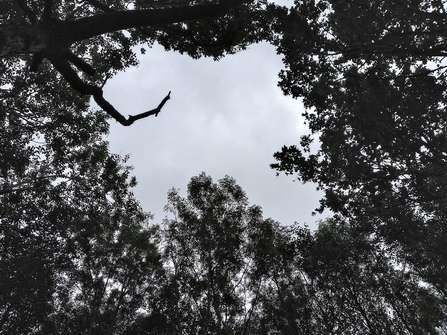Woodland

Woodland management
Much of the wildlife within UK woodland now relies on active management to provide a mix of different habitats, from piles of dead wood which can help beetles and fungi to open glades which help butterflies.
Woodlands define the landscape and, whether ancient or young, provide homes for thousands of species of plants, animals and fungi. They absorb noise, pollution, and carbon dioxide, they release oxygen, screen buildings, reduce flooding and provide a source of sustainable livelihoods and timber. By managing woodlands sustainably, we are nurturing a habitat that is brilliant for both wildlife and people.
Woodland management plan
Woodland creation is getting a lot of attention, but many established wooded areas on farms up and down the country are currently undermanaged. Woodlands play a significant role in supporting the environment and climate. The first thing to do is assess what the current state of the wood is and your target species on the farm. It would be useful to make a plan for management work for the next five years. When assessing a woodland for its wildlife value we would be looking at the tree species and age structure, the density of trees, the light levels, the quality of the understory, quantity of standing deadwood and deadwood piles, natural nesting and roosting sites, the rides and glades, whether or not the farmer wants to gain an income from the wood or not.
Some areas could be managed by coppicing and maintaining open areas like rides and some areas are left to go wild. Often this work is mimicking natural processes like wind and storm damage or grazing by large animals like bison that would have once lived in our woodlands. Without some form of management many of our woodlands will become dark, over-shaded and dominated by big mature trees without any variation in structure, age, or cover or even collapse. Ultimately this reduces the amount of wildlife that can live in them, so we often aim for a mix of habitats in woodland.
What would this benefit?
Mostly due to a lack of appropriate management, there have been significant declines in red list woodland and farmland bird species, moths, and butterflies, so by implementing appropriate maintenance and planting new diverse woodlands we are trying to change this trend. Woodlands also benefit mammals, beetles and fungi. Even reptiles and amphibians can be associated with woodland on farmland.
Useful links and info
Britain remains one of the least-wooded countries in Europe and the tiny area of surviving ancient woodland is still under threat. Woodland birds and butterflies continue their long-term declines. This year’s report highlights the continuing poor fortunes of the UK’s woodland birds. The UK Wild Bird Populations Indicator for woodland species show a long-term decline of 27% since the early 1970s, with declines of 7% evident over just the last five years. More worryingly, when looking at individual trends within the report, some specialist woodland birds have declined dramatically, including Willow Tit with a 94% decline since 1970 as illustrated by the joint Common Birds Census / Breeding Bird Survey UK-wide trend.
Read the BTO's "State of the UK's Birds 2020" article for more information.
Butterflies and Moths
Woodland Management for Butterflies
A historical review and modern atlas of Nottinghamshire Butterflies
Funded by

